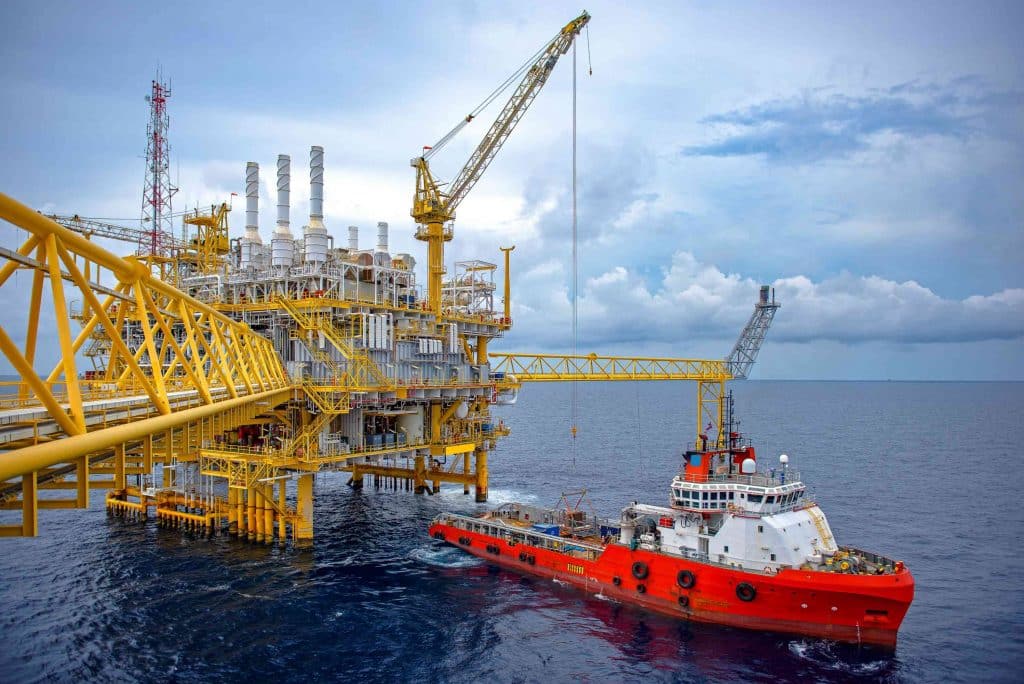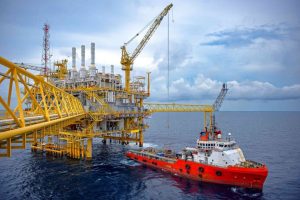Explore the evolving offshore support vessel (OSV) market in the Persian Gulf. Understand key trends, technologies, regional dynamics, and what the future holds for this vital maritime sector.
Why Offshore Support Vessels Matter in Modern Maritime Operations
Offshore support vessels (OSVs) are the silent workhorses of offshore energy, quietly enabling the day-to-day operations of oil and gas platforms, subsea construction, wind farm development, and maritime logistics. While tankers and drillships often grab headlines, OSVs are the lifelines—delivering personnel, equipment, and critical services far from shore.
In the Persian Gulf, this role is especially vital. Home to nearly 30% of the world’s oil reserves and an expanding offshore gas infrastructure, the region relies heavily on a diverse OSV fleet. From Platform Supply Vessels (PSVs) and Anchor Handling Tug Supply (AHTS) vessels to Diving Support Vessels (DSVs) and crew boats, these vessels support some of the most valuable and geopolitically sensitive offshore assets on Earth.
As regional players like Saudi Aramco, QatarEnergy, ADNOC, and Iran’s NIOC ramp up offshore operations, demand for modern, efficient, and environmentally compliant OSVs is rising fast.
Dynamics Shaping the OSV Market in the Persian Gulf
A Region Fueled by Energy
The Persian Gulf remains one of the most energy-rich zones globally. With countries aggressively pursuing hydrocarbon expansion and even offshore wind pilots, the demand for OSVs is directly tied to upstream and midstream growth.
Key developments fueling OSV activity:
-
ADNOC’s $150 billion 5-year investment plan (2023–2027), which includes offshore development projects like Hail and Ghasha fields.
-
QatarEnergy’s massive North Field Expansion, expected to position Qatar as the world’s largest LNG exporter by 2027.
-
Aramco’s $55 billion offshore drilling initiatives, including additional jack-up rigs and offshore construction support in Zuluf and Safaniya.
These initiatives have resulted in record demand for OSVs, especially AHTS and PSVs, according to Clarksons Research.
Fleet Composition and Regional Ownership
As of 2024, over 550 offshore support vessels operate in the broader Persian Gulf region. The largest fleet operators include:
-
ADNOC Logistics & Services (UAE)
-
Zamil Offshore (Saudi Arabia)
-
Milaha Offshore (Qatar)
-
Valaris, Bourbon, and Tidewater (operating via charters or joint ventures)
While older vessels still operate under flag-of-convenience, most Gulf NOCs (national oil companies) are upgrading fleets to meet IMO and regional safety/environmental standards.
Key Technologies and Developments Driving Change
Hybrid Propulsion and Fuel Efficiency
As the IMO pushes for carbon reduction, hybrid propulsion systems—using a combination of diesel and battery-electric engines—are becoming attractive in the Gulf.
In 2023, Zamil Offshore launched Saudi Arabia’s first hybrid-electric PSV, and similar projects are underway in UAE yards with assistance from Wärtsilä and ABB Marine.
Dynamic Positioning (DP2/DP3)
Modern OSVs require precise station-keeping capabilities near rigs and platforms. Gulf operators are investing in vessels with DP2 and DP3 systems, ensuring safety and stability under various sea states.
Inmarsat and DNV are also supporting regional clients in deploying smart DP systems with real-time weather and seabed analytics.
Digitalization and Condition Monitoring
Fleet operators now use digital twin technology, remote diagnostics, and predictive maintenance platforms. These systems help reduce downtime, cut fuel consumption, and extend the life of expensive propulsion or winch systems.
ABS and Lloyd’s Register offer cyber-secure digital solutions tailored to OSVs operating in congested and high-risk Gulf waters.
Persian Gulf Oil Rigs Static Template, https://www.digitalcombatsimulator.com/en/files/3314461/
Challenges Facing the Offshore Support Vessel Sector
Overcapacity and Rate Volatility
A major issue has been OSV oversupply, particularly after the 2014–2016 oil price crash. While recovery is underway, charter day rates remain inconsistent. As per VesselsValue and BIMCO, average AHTS day rates in the Gulf range from $8,000 to $20,000 (2023), with short-term spikes during rig mobilizations.
Some vessels remain idle, especially older tonnage without DP or environmental certifications.
Environmental Compliance Pressure
With IMO Tier III NOx emission standards and MARPOL Annex VI sulfur limits, operators must invest in:
-
Low-sulfur fuel or LNG options.
-
Exhaust gas cleaning systems (scrubbers).
-
Ballast water treatment systems.
Non-compliance could result in detention under Port State Control regimes, especially in UAE and Saudi Arabia, both known for strong enforcement.
Crew Competency and Shortages
Operating modern OSVs requires well-trained crew familiar with DP, hybrid engines, and integrated bridge systems. However, the region still faces a shortage of skilled DP officers, especially as demand spikes.
Institutes like IMAREST, The Nautical Institute, and regional academies are working with employers to close this gap through simulation-based training and certifications.
Real-World Applications: Case Studies in the Gulf
ADNOC’s OSV Fleet Expansion Strategy
In 2022, ADNOC L&S ordered several newbuild PSVs and AHTS vessels from UAE shipyards, integrating battery packs and DP2 systems. The company emphasized in-country value (ICV), using local suppliers and UAE-trained seafarers.
The strategy has helped ADNOC:
-
Cut CO₂ emissions by 30% for each vessel compared to 2015 models.
-
Improve charter availability for long-term offshore campaigns.
Iran’s Adaptation Amid Sanctions
Despite sanctions, Iran’s NIOC continues to operate a domestic OSV fleet via subsidiaries. Most vessels are over 15 years old, but Iran has invested in refurbishments using locally sourced parts and tech partnerships with Chinese firms.
While these OSVs struggle to meet global standards, Iran’s Bandar Abbas Shipyard has launched several home-built AHTS vessels, signaling domestic capacity growth.
Future Outlook: Innovation Meets Opportunity
The OSV market in the Persian Gulf is poised for transformation over the next 5–10 years. Key projections:
-
Fleet renewal will accelerate, especially as older vessels are phased out under stricter IMO decarbonization rules.
-
AI integration in navigation, fuel optimization, and crew scheduling will improve operational efficiency.
-
Offshore wind support vessels (SOVs and CTVs) may emerge as the UAE and Oman explore clean energy offshore.
In 2024, Saudi Arabia announced pilot zones for offshore hydrogen production, hinting that OSVs could soon support not only hydrocarbons but also green energy projects.
Clarksons’ Offshore Market Review (2023) forecasts a 6–8% CAGR growth in OSV demand across the Gulf through 2030, driven largely by Qatar’s LNG expansion and the UAE’s energy diversification.
Frequently Asked Questions (FAQ)
What is an Offshore Support Vessel (OSV)?
An OSV supports offshore oil, gas, and wind operations. It may transport crew, cargo, equipment, or conduct towing, anchor handling, and diving services.
Which countries dominate OSV operations in the Gulf?
The UAE, Saudi Arabia, and Qatar have the largest OSV fleets, primarily serving ADNOC, Aramco, and QatarEnergy operations.
Are OSVs in the Gulf environmentally compliant?
Most modern OSVs in the Gulf meet IMO sulfur and NOx standards. Older vessels are gradually being retrofitted or retired.
What types of OSVs are most common in the Gulf?
Platform Supply Vessels (PSVs), Anchor Handling Tug Supply (AHTS), Crew Transfer Vessels (CTVs), and Diving Support Vessels (DSVs) are widely used.
Is offshore wind energy increasing OSV demand in the Gulf?
While still in early stages, offshore wind initiatives in the UAE and Oman could soon require specialized SOVs and CTVs.
How are regional companies dealing with crew shortages?
Companies are investing in local maritime academies and simulators, often in partnership with institutions like The Nautical Institute and IMAREST.
What is the future of OSVs in the Persian Gulf?
With increasing investments in clean fuels, digital systems, and hybrid propulsion, the OSV sector in the Gulf is moving toward sustainability and efficiency.
Conclusion: A Market in Motion Beneath the Surface
Behind the glittering skylines of Abu Dhabi and Doha, and beneath the oil rigs dotting the sea, a quiet revolution is taking place. The offshore support vessel market in the Persian Gulf is not just keeping pace with offshore development—it’s reshaping itself in real time.
From hybrid propulsion and AI-driven navigation to green energy support and regional fleet renewal, the OSV sector is transitioning from utility to strategy. For maritime professionals, students, and shipowners, understanding these shifts isn’t optional—it’s essential for remaining competitive, compliant, and future-ready in one of the world’s most strategic maritime regions.



